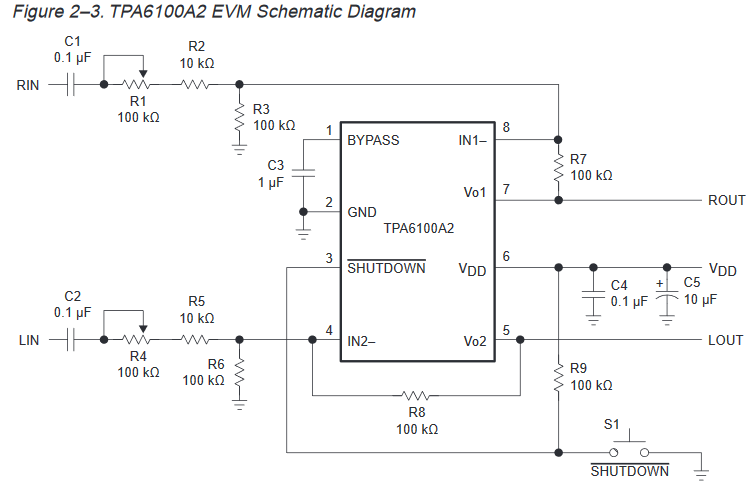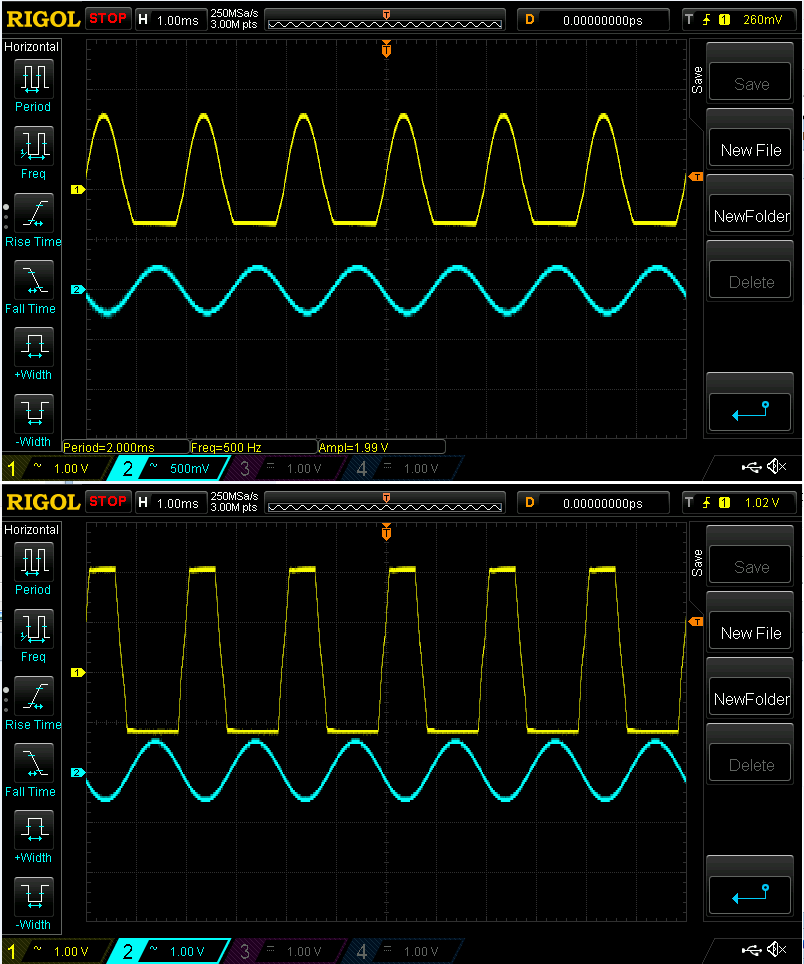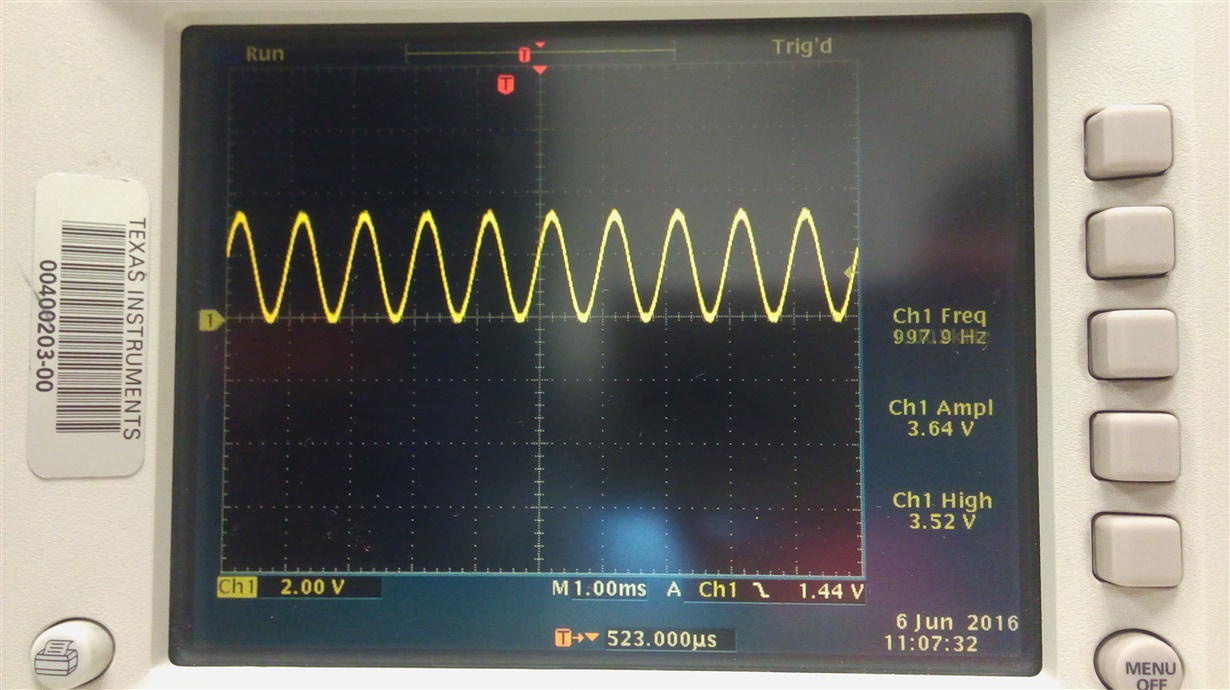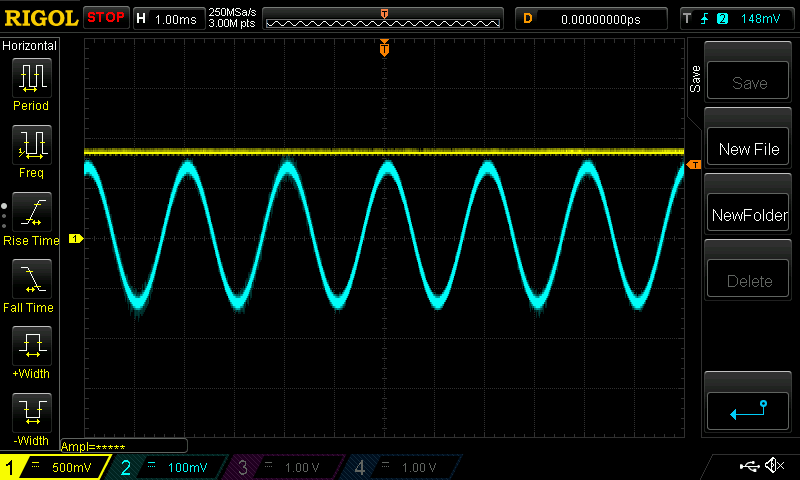I've built up the TPA6100A2 EVM circuit for myself on a breadboard:
Unfortunately I can't understand why I am getting asymmetrical clipping on the negative side of the amplified signal. In the captures below the yellow trace is the AC coupled output at ROUT and the blue trace is the input sine wave at 500Hz. On the bottom picture the input was turned up on purpose to overdrive the TPA6100 and more clearly demonstrate the asymmetrical clipping. Is this normal for this opamp? Otherwise, how may one go about correcting this behavior?
The resistors on my circuit are 5% through hole so I understand there could be variability from that but I took care to closely match R3 to R7 and R6 to R8.
Thank you,
-Marco







